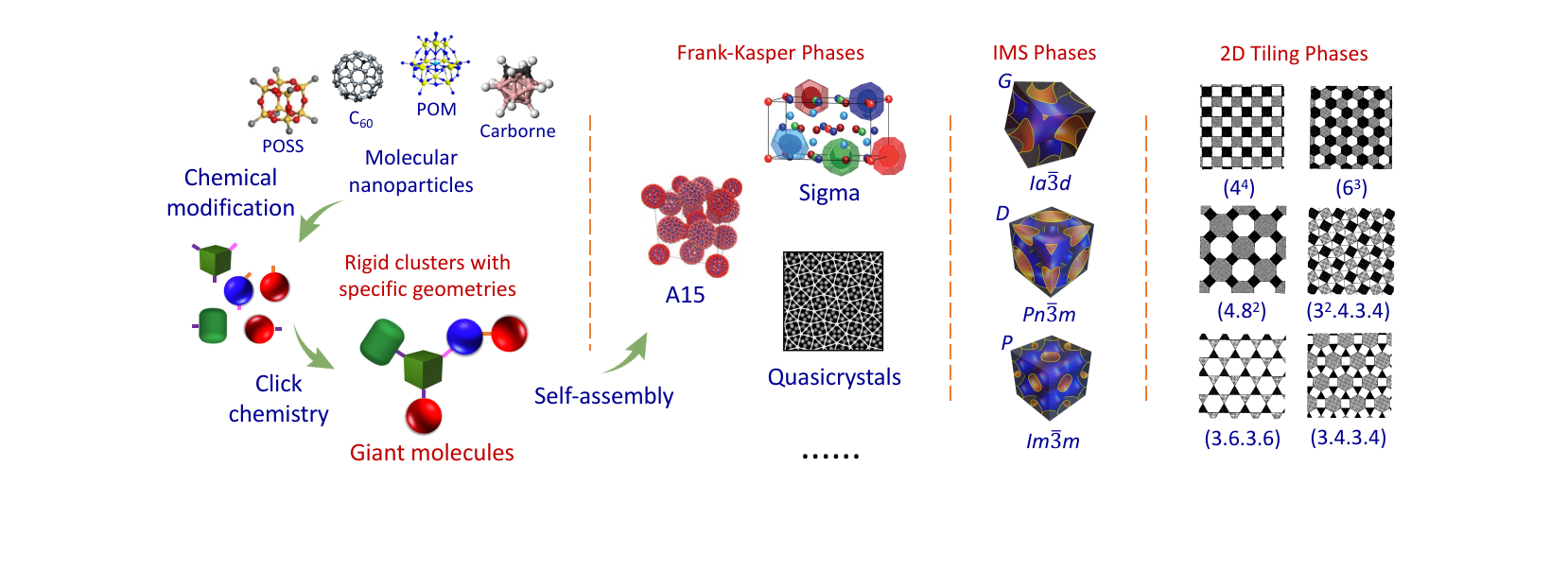箴言
----------------------------------------------
-----------------------------------------------
在科学上没有平坦的大道,只有那些不畏艰险沿着陡峭山路攀登的人,才有希望达到光辉的顶点。
----马克思
-----------------------------------------------
合作研究
------------------------------------------
请有兴趣的研究组联系我们。欢迎任何形式的合作,尤其是在自组装、水凝胶以及生物医药等方向的合作。
------------------------------------------
请有兴趣的研究组联系我们。欢迎任何形式的合作,尤其是在自组装、水凝胶以及生物医药等方向的合作。
------------------------------------------
研究成果
16. A supramolecular structure with an alternating arrangement of donors and acceptors constructed by a trans-di-C60-substituted Zn porphryin derivative in the solid state. Soft Matt. 2011, 7, 6135-6143
发布时间:2016-04-29
Wang, C.-L.; Zhang, W.-B.; Hsu, C.-H.; Sun, H.-J.; Van Horn, R. M.; Tu, Y.; Anokhin, D. V.; Ivanov, D. A.; Cheng, S. Z. D.* A supramolecular structure with an alternating arrangement of donors and acceptors constructed by a trans-di-C60-substituted Zn porphryin derivative in the solid state. Soft Matter 2011, 7, 6135-6143. [Link] [PDF]

Abstract
When a molecule is constructed from geometrically isotropic [such as [60]fullerene (C60)] and anisotropic (such as porphyrin) units, as in the case of a trans-di-C60-substituted Zn porphyrin derivative (diZnCPD), great interest lies in the understanding of their individual contributions to structural formations and phase transitions. For this purpose, the compound, diZnCPD, was designed and synthesized. Its phase behavior was investigated viadifferential scanning calorimetry (DSC) and polarized light optical microscopy (POM) and its supramolecular structure was elucidated viawide-angle X-ray diffraction (WAXD) and selective area electron diffraction (SAED) in transmission electron microscopy (TEM). The diZnCPD possesses a polymorphism in its ordered structures. When cooled from the isotropic (I) phase with experimentally accessible rates, instead of transferring into its ultimate stable phase, this compound formed a less ordered, metastable phase with a layered structure at 152 °C. Annealing this metastable phase enabled a further transformation into a stable phase with a higher transition temperature. As such, this metastable phase is monotropic. The formation of the stable phase was thus thermodynamically favorable, but kinetically more difficult (with a higher barrier for the transformation). Direct formation of this stable phase from the I state was unsuccessful even after prolonged isothermal experiments over several days above 152 °C, indicating that the formation barrier of this stable phase is extremely high. The thermally stable phase possessed a supramolecular structure with a triclinic unit cell of a = 3.34 nm, b = 2.01 nm, c = 1.88 nm, α = 89°, β = 98°, and γ = 90°. Detailed structural analysis revealed that this is a donor–acceptor separated structure of C60s and porphyrins nearly along the [01[1 with combining macron]] direction within which the zig-zag shaped C60 channels are along the [001] direction of the unit cell. We believe this is the first example of generating a donor–acceptor separated structure of C60s and porphyrins in the bulk through a thermal annealing process. This structure provides promising potential for the use of this material to fabricate supramolecular electronic devices without utilizing a solvent process.





